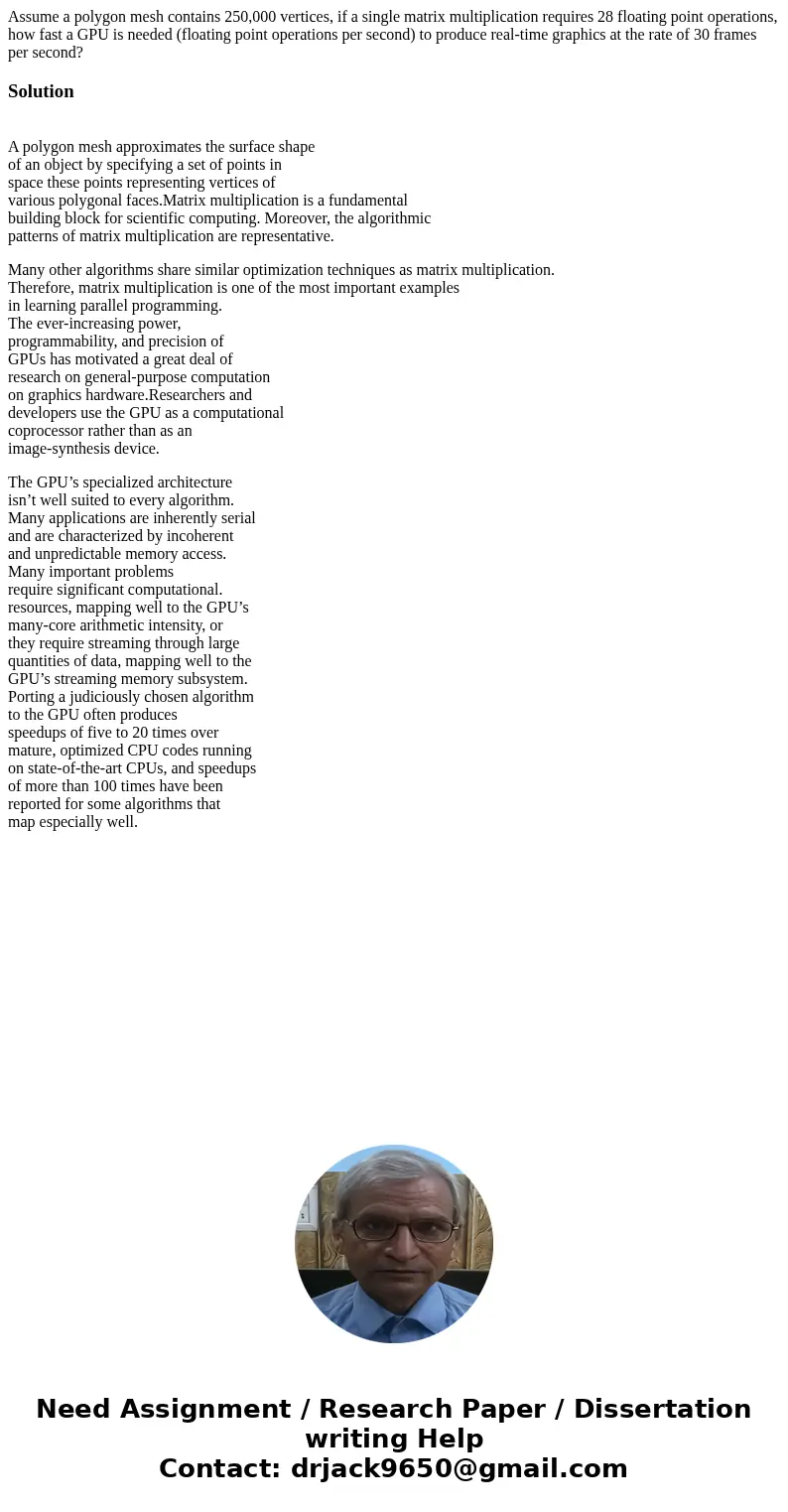Assume a polygon mesh contains 250000 vertices if a single m
Assume a polygon mesh contains 250,000 vertices, if a single matrix multiplication requires 28 floating point operations, how fast a GPU is needed (floating point operations per second) to produce real-time graphics at the rate of 30 frames per second?
Solution
A polygon mesh approximates the surface shape
of an object by specifying a set of points in
space these points representing vertices of
various polygonal faces.Matrix multiplication is a fundamental
building block for scientific computing. Moreover, the algorithmic
patterns of matrix multiplication are representative.
Many other algorithms share similar optimization techniques as matrix multiplication.
Therefore, matrix multiplication is one of the most important examples
in learning parallel programming.
The ever-increasing power,
programmability, and precision of
GPUs has motivated a great deal of
research on general-purpose computation
on graphics hardware.Researchers and
developers use the GPU as a computational
coprocessor rather than as an
image-synthesis device.
The GPU’s specialized architecture
isn’t well suited to every algorithm.
Many applications are inherently serial
and are characterized by incoherent
and unpredictable memory access.
Many important problems
require significant computational.
resources, mapping well to the GPU’s
many-core arithmetic intensity, or
they require streaming through large
quantities of data, mapping well to the
GPU’s streaming memory subsystem.
Porting a judiciously chosen algorithm
to the GPU often produces
speedups of five to 20 times over
mature, optimized CPU codes running
on state-of-the-art CPUs, and speedups
of more than 100 times have been
reported for some algorithms that
map especially well.

 Homework Sourse
Homework Sourse